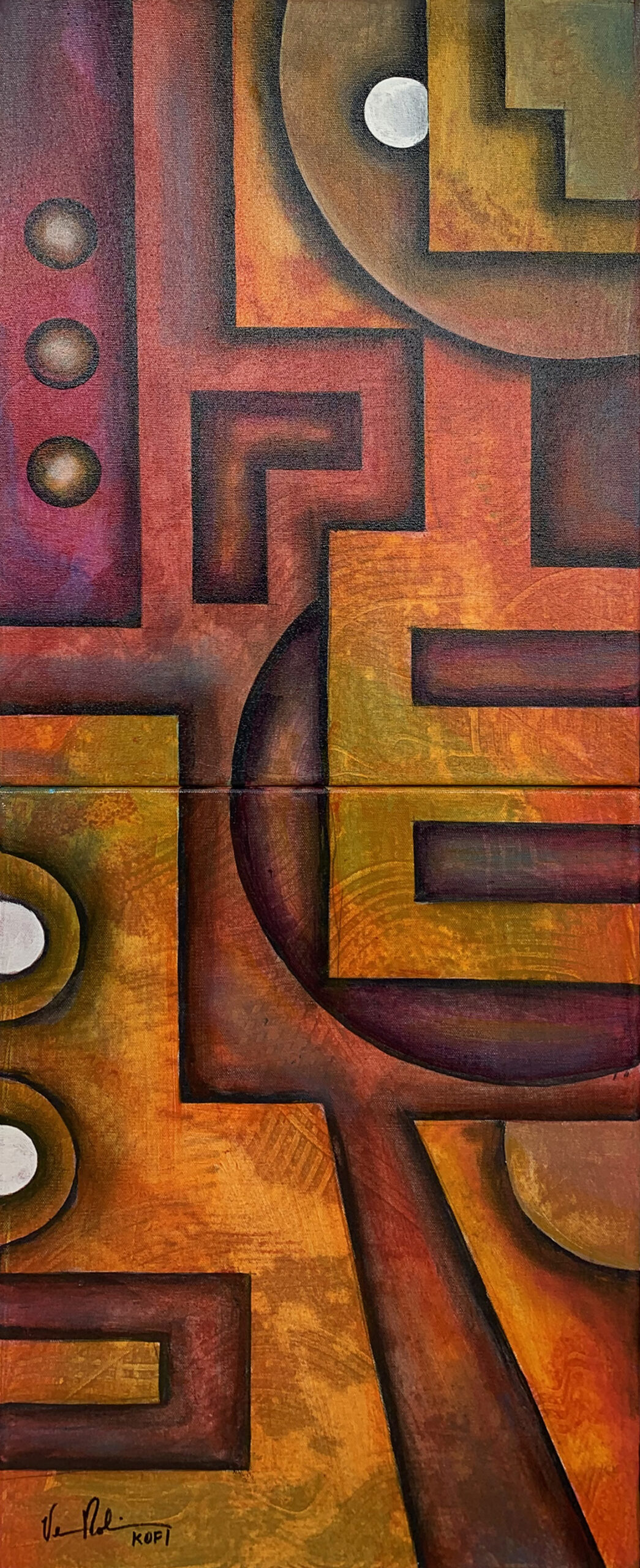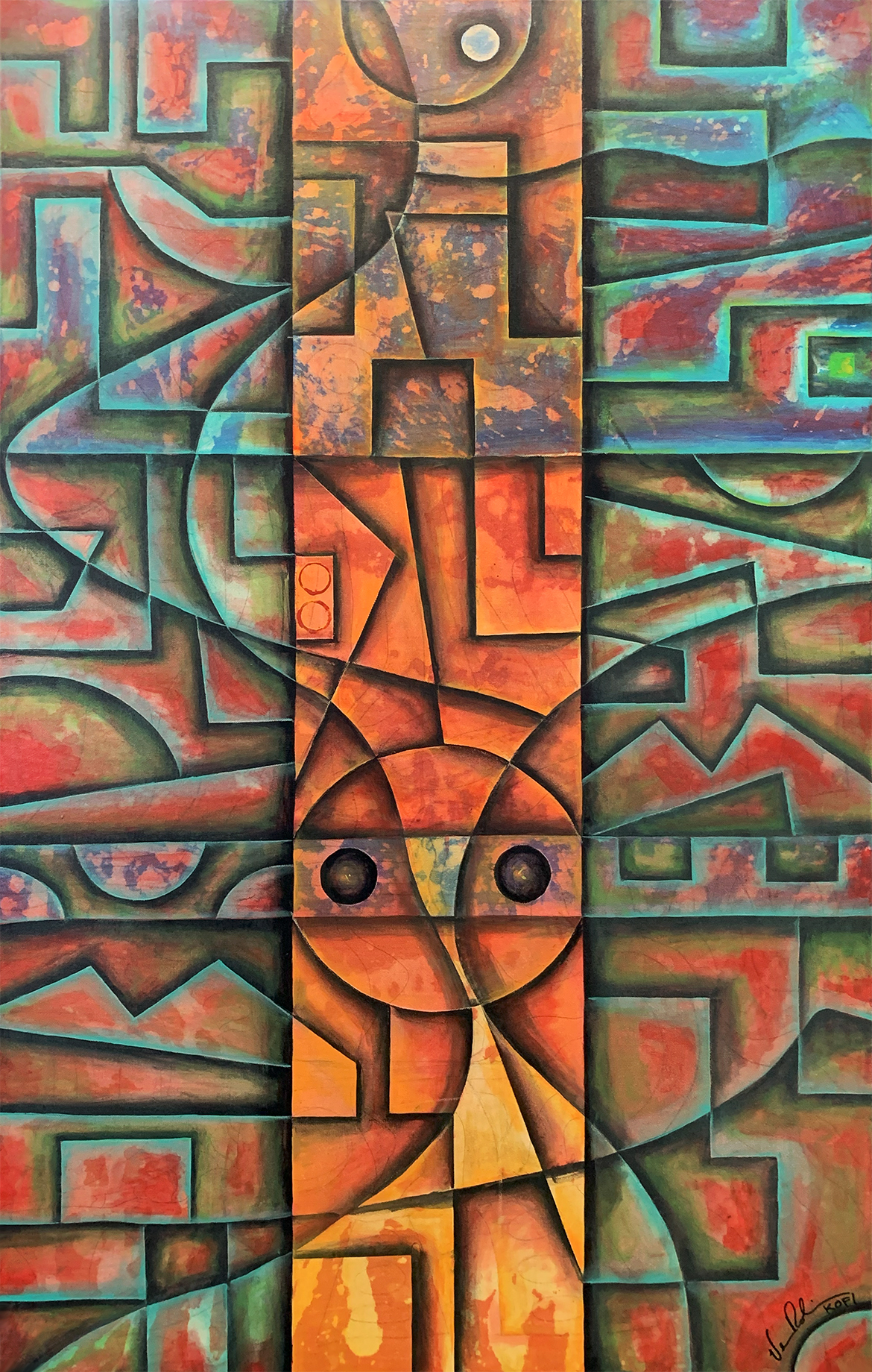ARTIST SPOTLIGHT: VERNON ROBINSON, SR. ARTIST SPOTLIGHT: VERNON ROBINSON, SR. ARTIST SPOTLIGHT: VERNON ROBINSON, SR.

Click for BIO
For Vernon Robinson, Sr., it has been a long journey to where he is today, a full-time artist in his studio at The B Complex in Atlanta, GA. While his fascination with creating art began during childhood, it was only after his retirement as a construction project manager that he was free to follow his passion fully.
Born in 1946, Robinson moved with his family to New York City. There he built his artistic foundation, from kindergarten through junior high school. He reflects on rigorous lessons from a teacher who demanded perfection in practicing symmetrical drawing patterns to create ornate crowns. After the devastating loss of his mother, the family returned to their native Pensacola, FL. During the early 1950s, Jim Crow segregation stifled any significant artistic development. He characterizes these years as "a very dark period."
After completing his early education and seeing a way out of Pensacola, Vernon enlisted in the U.S. Air Force and served four years. After his discharge, he moved to Atlanta in the 1970s and attended Atlanta Junior College as an art major. He studied under Professor K. Joy Peters, who nurtured and motivated his creativity to go beyond the strict structure and rules he had learned during earlier training.
When asked about his influences, Vernon reflects on a seventh-grade class field trip to the 135th Street Library in New York City. There he saw a pencil drawing of a Benin, West African mask. He was transfixed by its precision and symmetry. He said, "It was the most beautiful thing I'd ever seen." At that moment he realized his affinity for African art. He said, "I had a real desire to produce work that would be a semblance of the African continent, even though I had never been there at the time." That library eventually became the Schomburg Center for Research in Black Culture. This was a poetic and fitting start for this African American artist.
His artwork consists mostly of paintings and what he calls "built-up pieces," sculpted relief panels, all of which begin with a sketch or drawing from his extensive notebooks. From there, Robinson is guided by the work itself, changing direction or adding another dimension depending on how his original plan evolves as he works through his creative process. The "built-up" areas of his panels and canvases, along with layers of bold color, give the work a remarkable dynamism, depth, and beauty.
Vernon's art talent is innate. It resonates naturally with West African forms of expression. Its endearing power embodies the flowing, symmetrical, and colorful organic shapes exemplified in paintings from Sierra Leone and Liberia. His sculptural and relief work also embodies the asymmetrical visual rhythms often found in wood-carved panels throughout West Africa. His art has been categorized as abstract, but it has also been described by some as "Contemporary African Deco."
In celebration of their 25th wedding anniversary, Vernon and his wife, Dianne, made a long-anticipated trip to Ghana. There, he learned about the African naming traditions of the Akan people of Ghana, who frequently name their children after the day of the week on which they were born. At last, he had finally discovered a deep connection with his African roots that he sensed so profoundly. Thus, he adopted his spiritual/cultural name "Kofi," acknowledging the day of his birth on a Friday. Robinson frequently signs his artwork "KOFI," thus embracing this spirit.
Vernon is part of the fabric of the metropolitan Atlanta arts community. His work is in the permanent collection of the Hammond's House Museum and numerous private collections. He has participated in group exhibitions as part of African American for the Arts (AAFTA), of which he has been a long-time member.
With over forty years of experience in the arts, Vernon's inspiration comes from, in his words, "knowing that God has given me this gift to create and the freedom to express my ideas in all kinds of media." He admits that he enjoys creating, but also that he has an intrinsic need to create. He has devoted his time to painting and sculptural art, with a desire to express the excitement generated by what he sees in the world around him, and also to stimulate in viewers of his work that same visual excitement.












